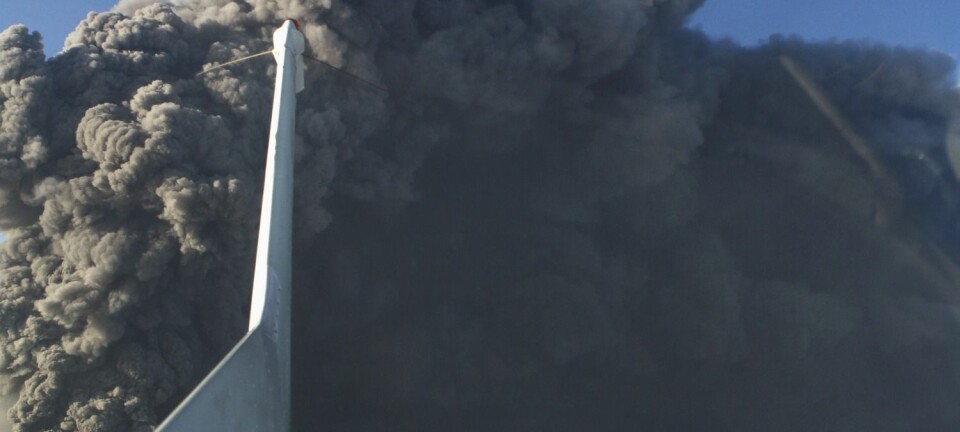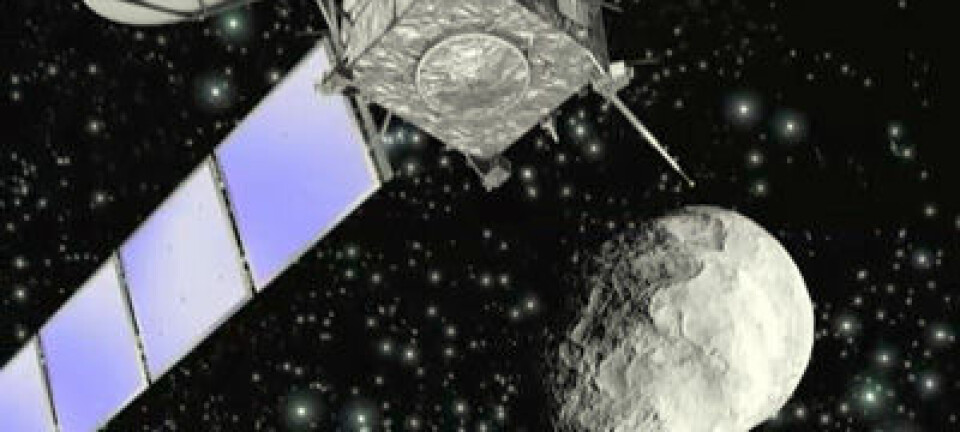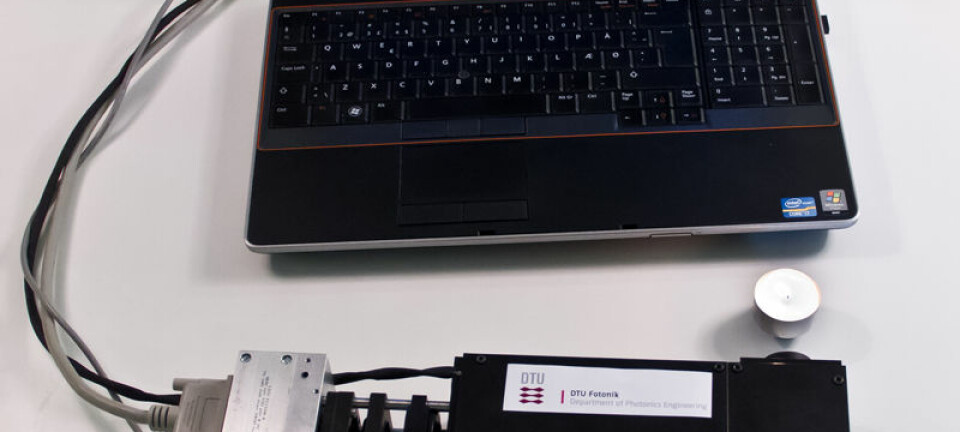
Lengthy can-do list for colour camera
Nuances of colour reveal environmental toxins, precious minerals or missing persons. Hyperspectral cameras are a niche product with multiple functions.
Denne artikkelen er over ti år gammel og kan inneholde utdatert informasjon.
The summer of 2003: A veteran Cessna airplane from 1957 traverses the sky over Örebro in Sweden. Trond Løke from the company Norsk Elektro Optikk (NEO) sits in the aft seat, hunched over a computer screen. A dark box was placed on the floor, in front of the screen. A lens projected through an opening in the bottom of the aircraft. The lens was taking in images of forests and farm fields – and maybe a camouflaged vehicle.
At least that was what Løke was hoping to detect. The black box with its tangle of wires was the firm’s prototype of a camera that picks up nuances of colour that our eyes are too insensitive to discern. It was looking for objects on the basis of the colours they reflect.
Success
The hyperspectral camera resembles a scanner. It draws line for line as the aircraft soared above the terrain.
An aging propeller plane cannot maintain a perfect course. The scanned swath of terrain formed a rather snaky pattern. But a navigation system from the Norwegian Defence Research Establishment (FFI) tracked the plane’s course. A computer program straightened out the track and determined the exact position of each image spot.

This was – and is – important for military customers. Norsk Elektro Optikk actually got its start in FFI circles and cooperation between NEO and FFI has continued.
“We found the vehicle on the ground,” says Løke.
“The flight was successful.”
Real or artificial plant
What is the secret behind the hyperspectral camera? How does it differ from a regular camera?
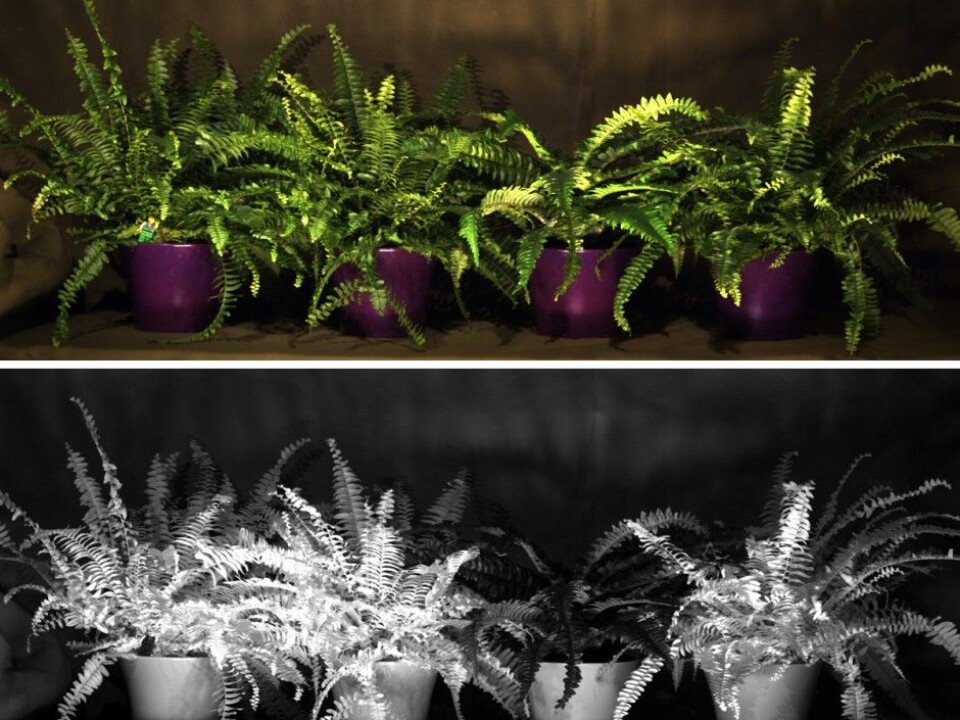
Torbjørn Skauli at FFI was one of the developers behind NEO’s hyperspectral cameras and gives us the short explanation.
“The retinas in our eyes and the image chip in a common digital camera have just three types of light sensors – for the colours red, green and blue,” explains Skauli.
The human eye sorts out the light in these three primary colours and mixes other colours from them. A hyperspectral camera can sort out colours in hundreds of hues for each point in the image.
Skauli has an example in which a hyperspectral camera differentiates between real and artificial plants.
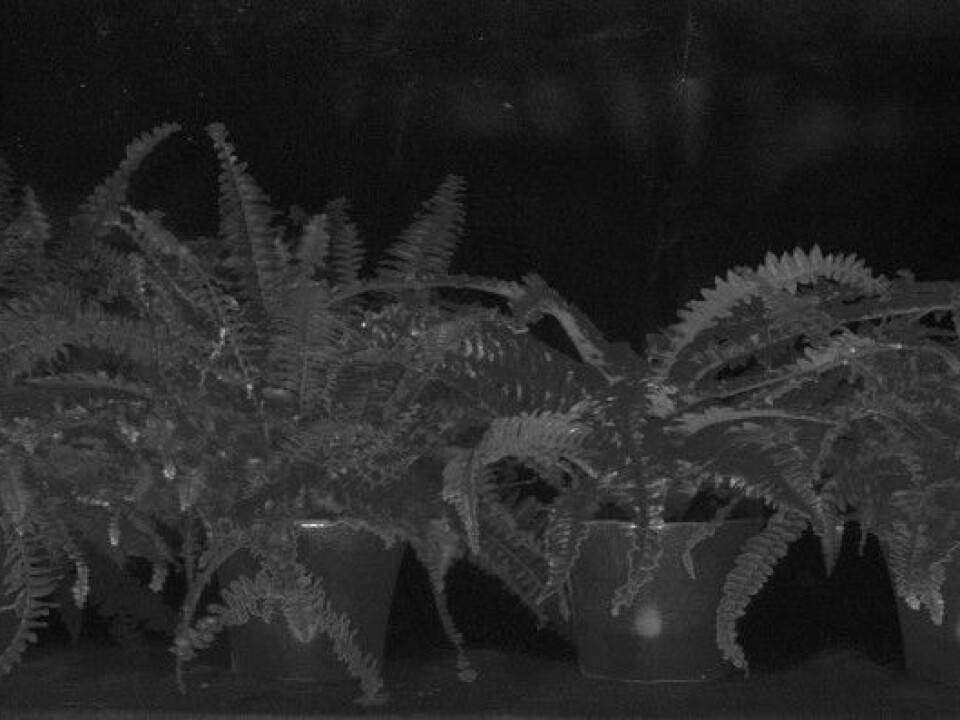
For the eye, and a normal camera, the greens look identical. But when we can separate nuances of colour, we see the difference easily.
Finding a Lego man
The differences are not always so easy to see as in this example. Even though we can compare narrow colour shades from the hyperspectral camera, it can be real difficult, if not impossible, for the human eye to differentiate among all the colour areas and find salient information.
“These tasks are performed much better by computers than by people,” says Skauli.
The computer program can find, for example, a green Lego figure hidden against a green plant. The human eye cannot easily detect two nearly identical shades of green, but small nuances are no problem for a computer that can discern among hyperspectral colours.
Military use
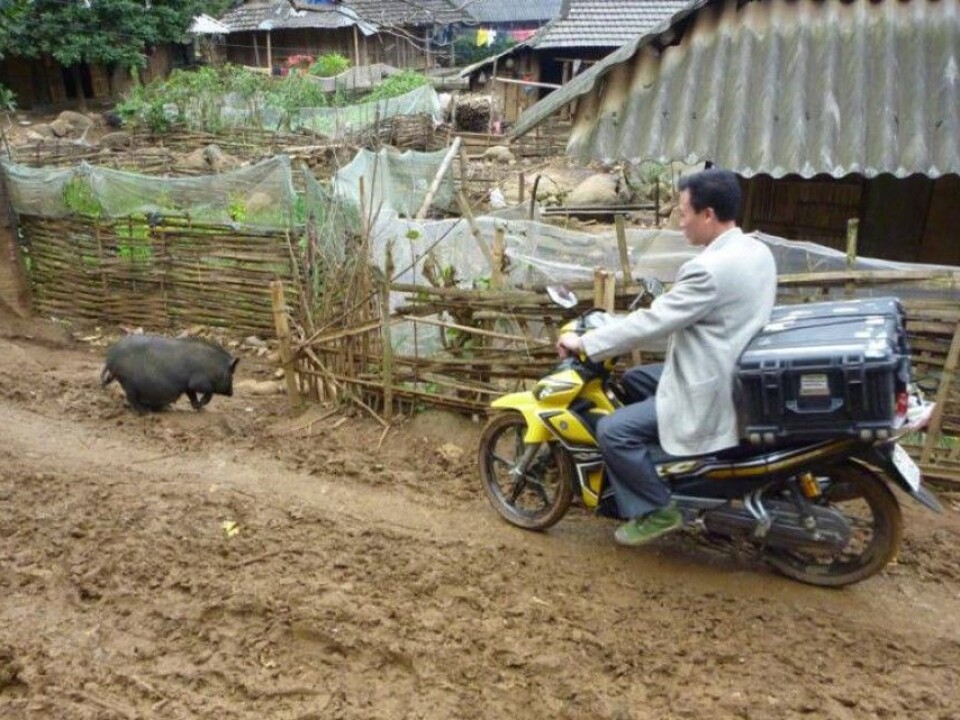
The Defence isn’t interested in using NEO’s hyperspectral camera to tidy up Lego figures. The military is more interested in what goes on in the battlefield.
“We think that hyperspectral cameras can help those studying photos to find which areas are the most interesting. One key feature is that you can get a lot out of searching for changes between two pictures taken at different times,” says Skauli.
Hyperspectral pictures can also detect chemical weapons. But as seen so often before, military research can be put to good civilian use.
Environment, minerals and Mars
Instead of scouting for enemy personnel, rescue workers can look for lost persons. The same equipment that can detect chemical weapons can find environmental toxins or alga blooms in the ocean.
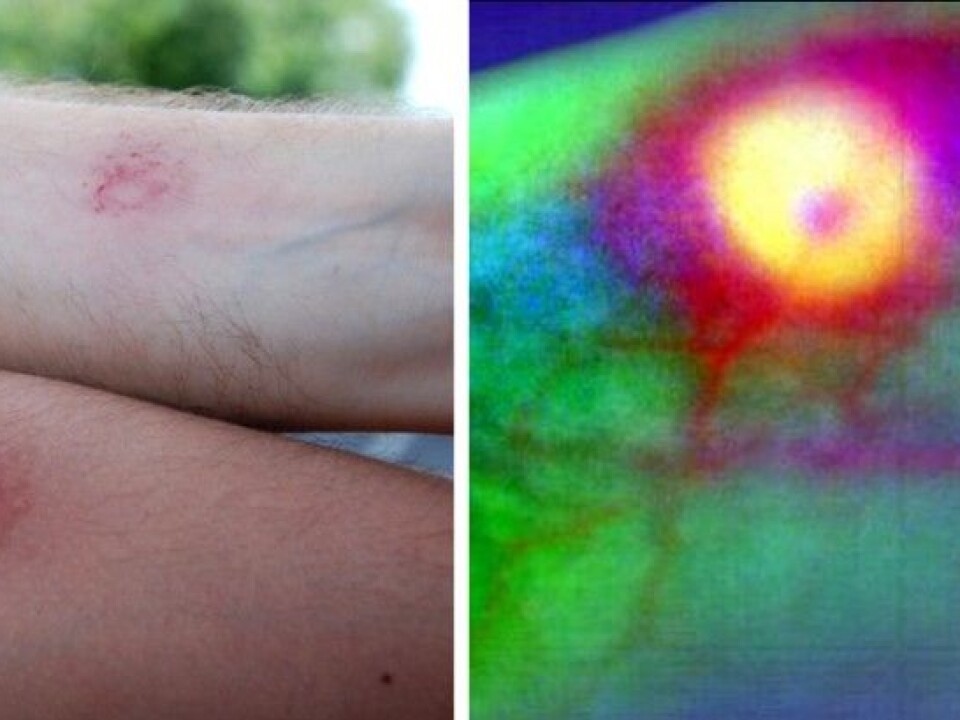
Different types of minerals light up in hyperspectral photos. This can be very useful for mining projects on Earth, and even scientists investigating other planets.
“A few years ago I took one of our cameras and teamed up with the American scientist Mario Parente at the Rio Tinto mines in Spain,” says Skjerping.
“NASA was interested in finding out how hyperspectral cameras could be used by vehicles on Mars to find interesting minerals.”
“We started with overview pictures and then moved closer and closer in toward interesting areas, as a vehicle on Mars could do,” says Skjerping.
Medicine, food, paintings

Patients can also benefit from hyperspectral cameras. Arthritis can be detected at an early stage by using them to analyse light beamed through hands. Wounds that are not healing reflect other colours than wounds that are mending.
A hyperspectral picture of a bruise can reveal how hard a person was struck when the bruise was made. This could be useful as evidence in police work and in courtrooms.
The technique is used industrially to control the quality of computer circuitry, medicines and foods. A computer program can swiftly warn of deviations in colour curves from products that fail to maintain stringent standards.
Like Trond Løke flew over Örebro in a small plane in 2003, pilots can patrol over forests or croplands. They can be equipped with hyperspectral cameras that distinguish between healthy plants and ailing ones, or between different types of trees.
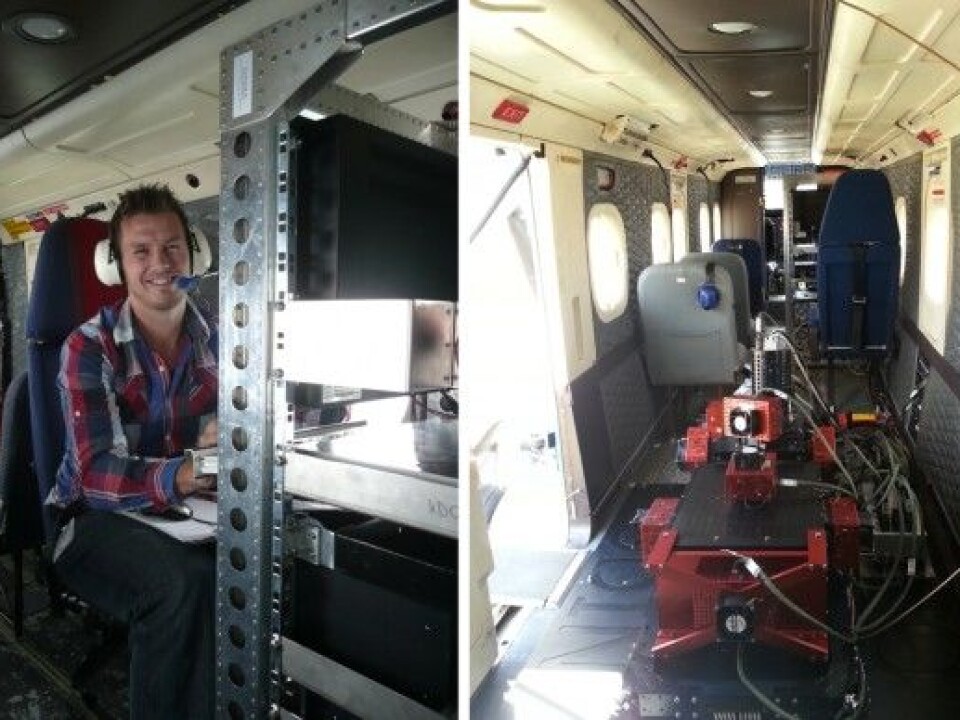
They could be used over tropical rain forests to spot illegal logging operations.
A hyperspectral camera has also served Norway’s National Gallery of Arts, Architecture and Design when it photographed Edvard Munch’s painting The Scream. Colour spectrums reveal how the artist built up the painting layer by layer and also bring out hidden details.
A hyperspectral camera from NEO has been put to work at the Louvre in Paris to analyse which paints an artist has used, enabling works to be restored to their original splendour.
One-eyed Odin
NEO’s newest hyperspectral camera Odin was test-flown in September 2013. The tests were conducted in collaboration with Germany’s version of NASA, Deutsches Zentrum für Luft- und Raumfahrt, and the French aerospace research centre, ONERA. These tests were of a different calibre than the first flights over Örebro.
“We spent three weeks doing the job, compared to one day in Örebro. The flights cost several hundred thousand Euros and we were over 20 persons at work, from Norway, Germany and France,” says Løke.
“It all functioned perfectly. We even had a little time left for wine sampling in Saint Emilion,” he says.
The flights were part of the Norwegian-French defence project SYSIPHE. While a French camera was tested, Odin was linked to a computer system for real-time analysis of the pictures, developed through teamwork between FFI and NEO.
“We call it Odin because the Norse god, according to the ancient Edda tale, sacrificed an eye to drink from the wellspring of wisdom. Our Odin also has just one eye, in the sense that it replaces the functions of two cameras,” explains Hallvard Skjerping.
Broader field
Odin can see the visible colours of the rainbow and higher energy infrared light as well.
“Infrared light is particularly useful in environmental monitoring, for instance in differentiating between sick plants and healthy ones,” says Skjerping.
Two image chips are mounted inside Odin, one for visible light and one for infrared. They have to share the light from Odin’s single eye, consisting of a lens and mirror.
“The optics in Odin need to be strong and sensitive. The camera weighs 80 kilos,” says Skjerping. Odin also features the latest improvements scientists at NEO have developed, including computerised corrections of optical errors in the image chip.
“The goal is to develop a system that can be used by military intelligence and for scientific research,” says Skjerping.
----------
Read the Norwegian version of this article at forskning.no
Translated by: Glenn Ostling
External links
- What is Hyperspectral Imaging?
- SYSIPHE, pdf
- Tomorrow´s intelligence systems
- Mario Parente: Simulating a Mars mission for the identification of samples of high mineralogical interest using a portable imaging spectrometer, abstract av artikkel lagt fram på høstmøtet til American Geophysical Union, 2011, The Smithsonian/NASA Astroph
- Holger Lange og Svein Solberg: Forest Reflectance Modelling of Hyperspectral Data, ForestSat, november 2007
- E. Olsen et.al: Spectral and spatially resolved imaging of photoluminescence in multicrystalline silicon wafers, Applied Physics Letters, Volume:99 Issue: 1, 11. juli 2011, DOI 10.1063/1.3607307







